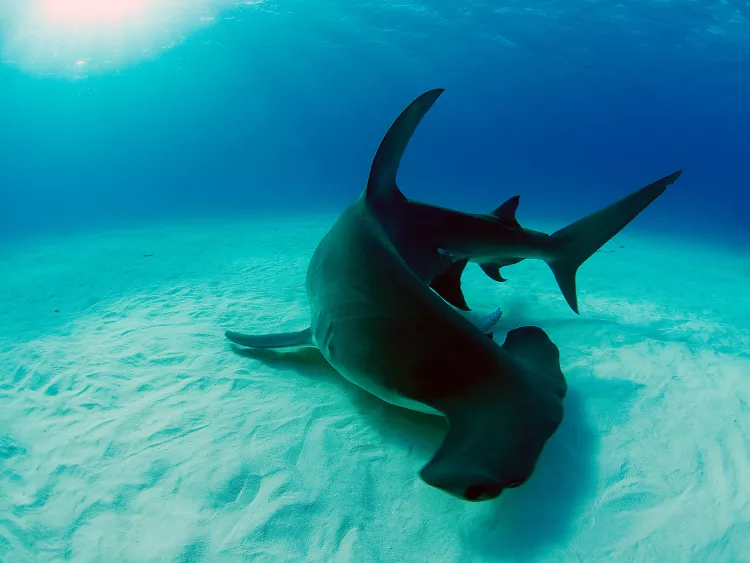Large sharks benefit from marine reserves
Expansion of protected areas into U.S. federal waters could safeguard core home range areas used by bull, great hammerhead and tiger sharks.
Current research has shown that waters off Florida and the Bahamas are important pupping and feeding grounds for several sharks, providing them with the critical habitat required for the conservation of these slow-to-mature ocean animals.
Researchers at the University of Miami (UM) Rosenstiel School of Marine and Atmospheric Science studied the core home range of 86 bull, great hammerhead and tiger sharks tagged in waters off south Florida and the northern Bahamas.
The aim of the study was to find out whether these highly mobile shark species would benefit from spatial protection, such as marine protected areas (MPAs).
The team examined shark movements in core habitat use areas, or CHUAs, where the sharks were spending the majority of their time, in relation to zones that prohibited fishing or were these sharks were already fully protected within areas of the U.S. and Bahamas exclusive economic zones (EEZs).
The results show that none of the tracked bull shark’s regional CHUAs were in areas that are fully protected from fishing, and for the great hammerhead and tiger sharks tracked, only 18 percent and 35 percent, respectively, of their core use areas were currently protected. The study also found that the majority of the CHUAs utilized by all three shark species were within the U.S. EEZ.
The findings suggest the expansion of protected areas into U.S. federal waters would safeguard all of the core home range areas used by these three species of sharks.
- Log in to post comments

























